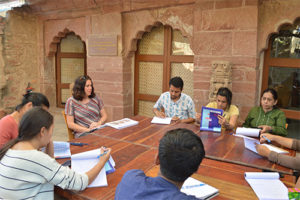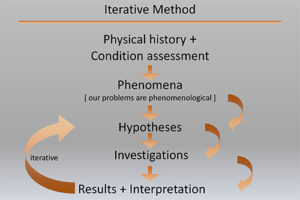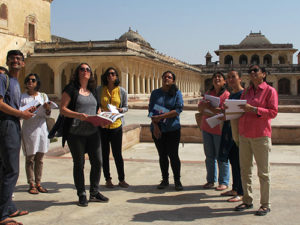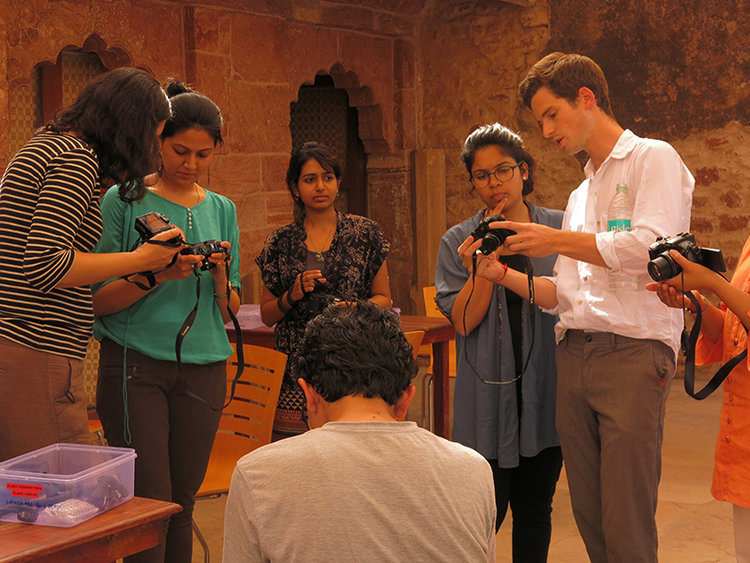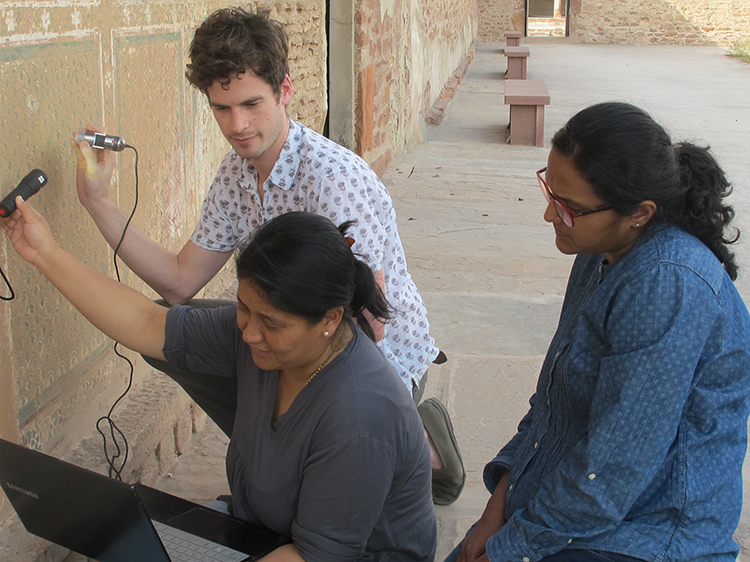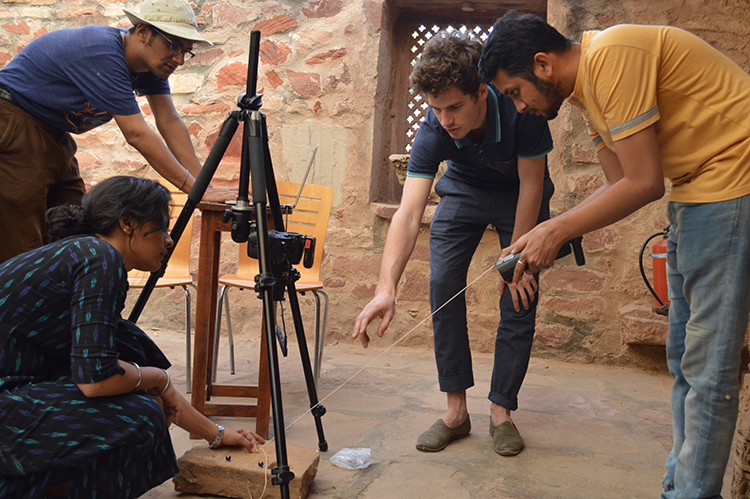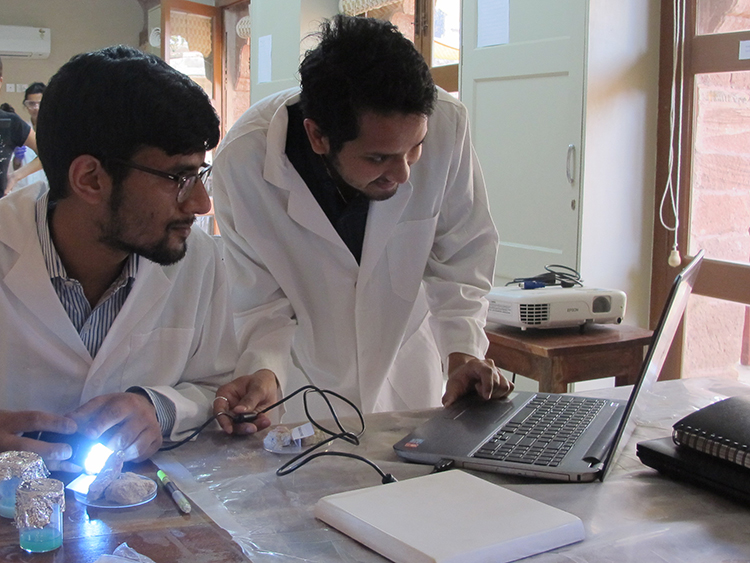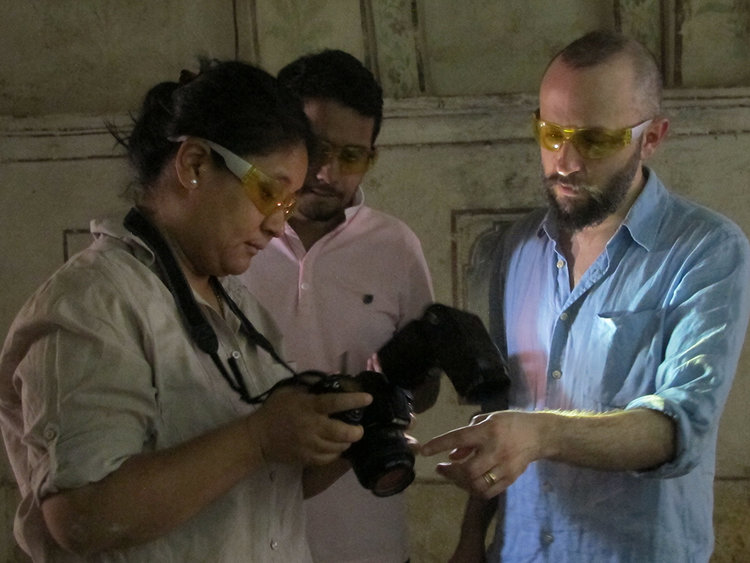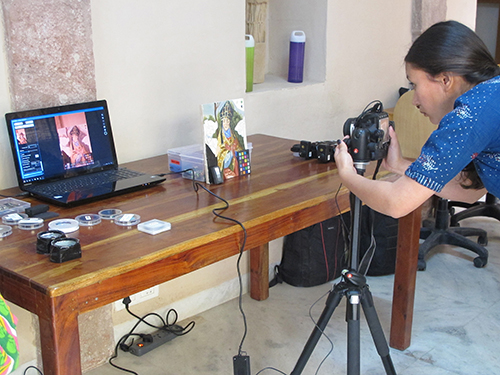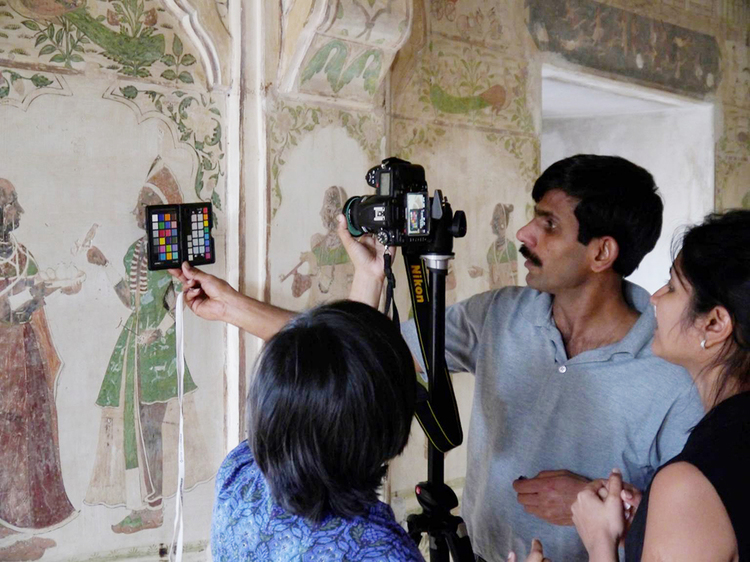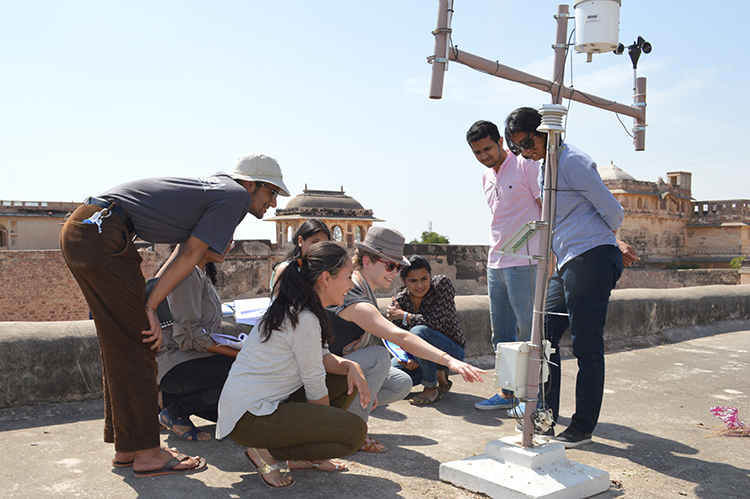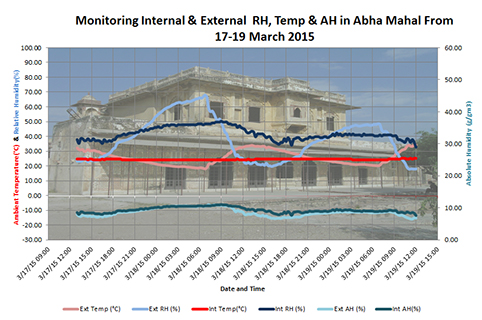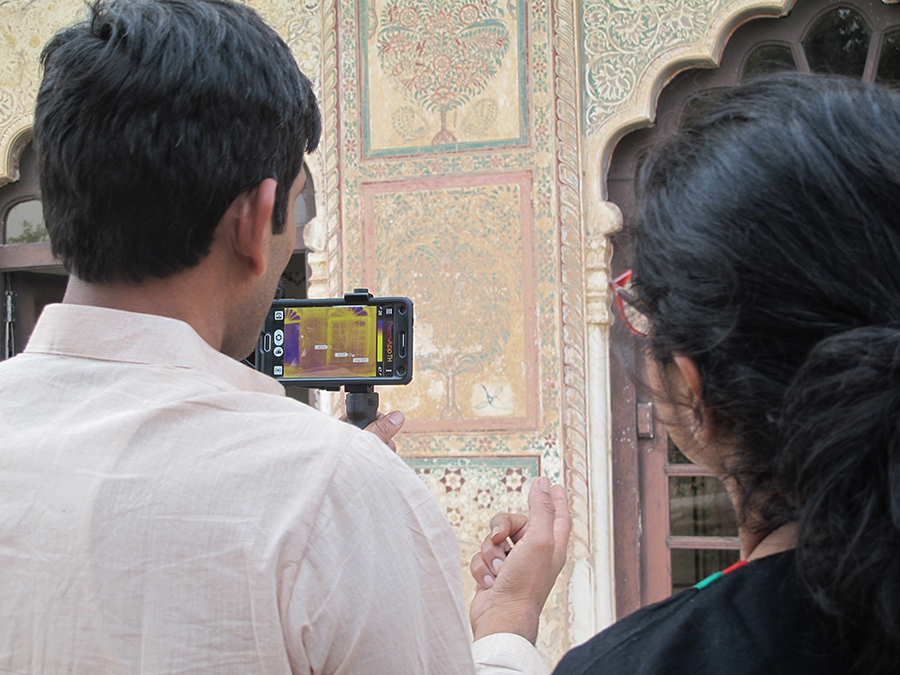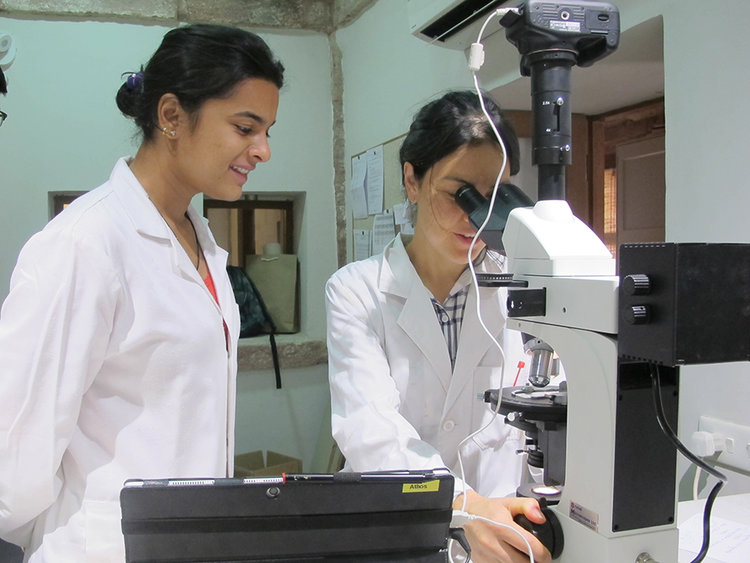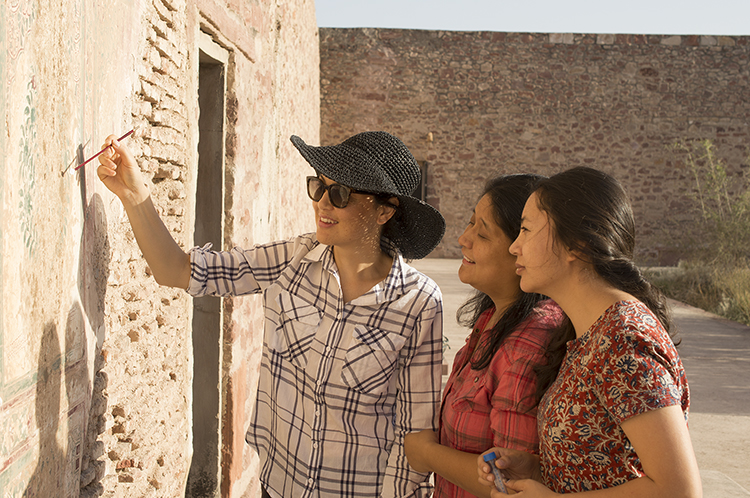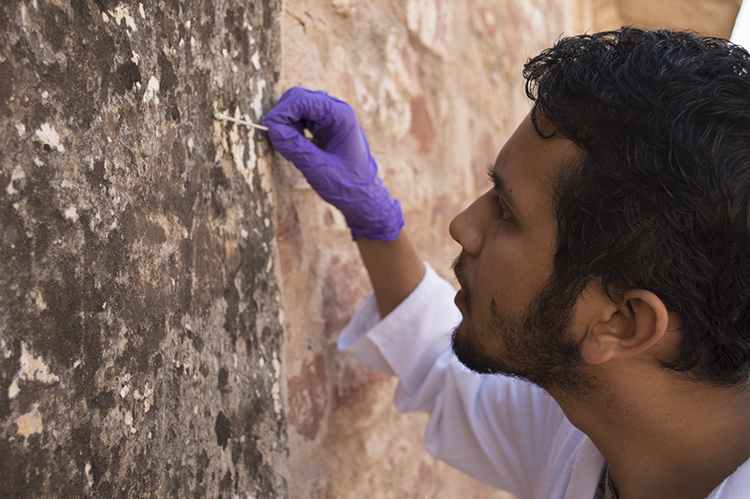The programme of courses taught over a six-week period in Nagaur is designed to provide conservators with the knowledge and tools for undertaking a wide range of conservation activities and assessments. The courses cover various essential investigative measures for conservation. All courses include both theory and practice and are suitable for both experienced conservators and those at entry-level.
The courses offered in 2019 are:
- Principles of conservation
- Condition assessment with technical imaging
- Assessing materials for conservation
- Environmental assessment and monitoring
- Multispectral imaging
- Biodeterioration and control
In addition, for the 2019 programme photographer Neil Greentree will be offering lectures as well as a morning photography session for course participants on his imaging methods.
Principles of Conservation
Course instructor: Charlotte Martin de Fonjaudran
The principles that we apply to what we do underpin all of conservation, whether that conservation is preventive or remedial, whether it is of sites, objects or whole collections. These lectures will outline the basis for the choices that we make, including ethical and technical aspects. An approach to decision-making will be presented with reference to international charters and guidelines, and to criteria that can be applied to help us structure our choices. The different approaches to conservation—the notions of physical history, values and significance, authenticity, integrity, minimal intervention, reversibility, retreatability, stability, and compatibility—and how they shape general and specific intervention criteria will be reviewed and illustrated through various case studies. The pivotal and difficult role of conservators within an interdisciplinary framework will be emphasised. The scientific approach to conservation will also be discussed with respect to constraints often encountered by conservation professionals.
Condition assessment with technical imaging
Course instructor: Sam Whittaker
Imaging is fundamental to examining and recording the condition of monuments and objects. In this course, using typical condition phenomena, participants will learn a full range of imaging techniques including capture with incident and raking light, as well as macro-imaging (with a capture ratio of up to 1:1) and micro-imaging (using digital USB microscopes with magnifications up to 200x). In learning how to record and assess condition, principles of imaging, assessment and use of equipment, file management and image processing will all be taught with practical sessions both at Nagaur and Jodhpur. All necessary equipment will be provided for the teaching. Participants will also develop skills in categorising and creation of a visual glossary.
Assessing materials for conservation
Course instructor: Amarilli Rava
Every day conservators are faced with making decisions about what materials to use and how to apply them. This course will include: using MSDS (Material Safety Data Sheets) and TDS (Technical Data Sheets); setting Performance Criteria for an intervention; specifying Working Property Criteria for materials; undertaking materials characterisation—focusing on absorbents and polymers as typical types of materials; carrying out laboratory tests to assess material properties; and practice with using various application methods to affect the way the materials work.
Multispectral imaging for conservation
Course instructor: Giovanni Verri
This specialist course is for imaging with ultraviolet and infrared light. Ultraviolet-induced fluorescence and ultraviolet-reflected are classic technical imaging techniques, and with developments in both equipment and software are now much more accessible and useful for conservators. Their uses include characterisation of materials (such as organic colorants, which are very common in Indian art, and conservation materials such as coatings). Imaging in the infrared region also has a long history of use in conservation but again with developments in affordable equipment and manipulation software, it is now far more accessible. Infrared-reflected imaging is particularly useful to examine for underdrawings and for pigment identification with false-colour. The principles of multispectral imaging will be presented with practical, hands-on sessions using a variety of equipment.
Environmental assessment and monitoring
Course instructor: Eugenia Geddes da Filicaia
Whether dealing with sites, objects or collections, understanding the effects of the environment on them is essential. As with imaging, new developments in very affordable and user-friendly technology allows conservators easily to collect relevant data. This course will cover: the principles of environmental assessment; designing and implementing a measurement or monitoring strategy; and collecting, presenting and interpreting data. There will also be a session on infrared thermography.
Biodeterioration and control
Course instructor: Caroline Kyi
In hot and humid climates, deterioration due to organisms is extremely common. Understanding the nature of the damage caused by organisms — from macro organisms such as bats, to microorganisms such as bacteria — allows conservators to assess and prioritise the risks posed to monuments, objects and collections. Control is often difficult. Preventive measures to control infestation and environmental conditions will be considered, as will natural biocides and the more commonly used commercial biocides.

